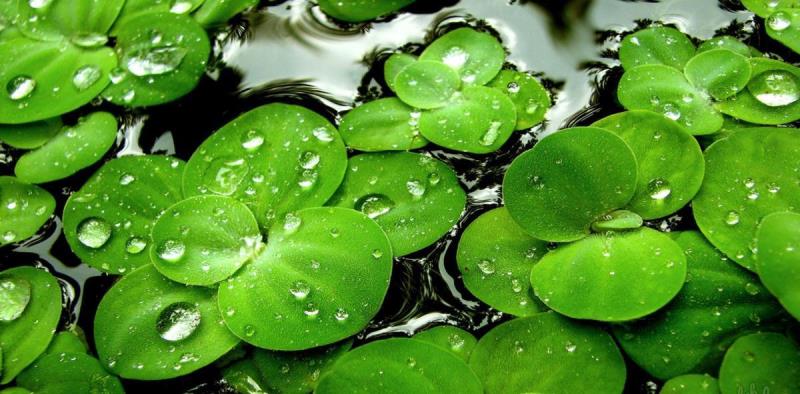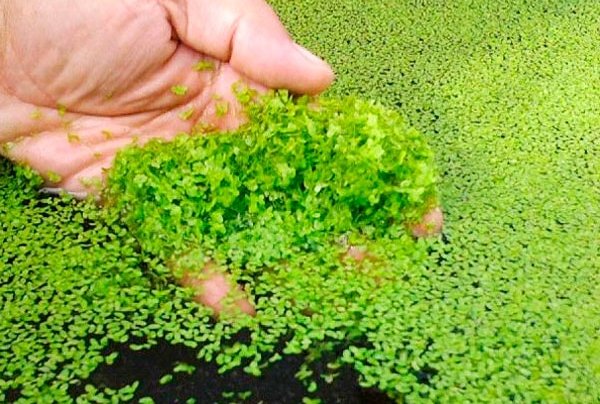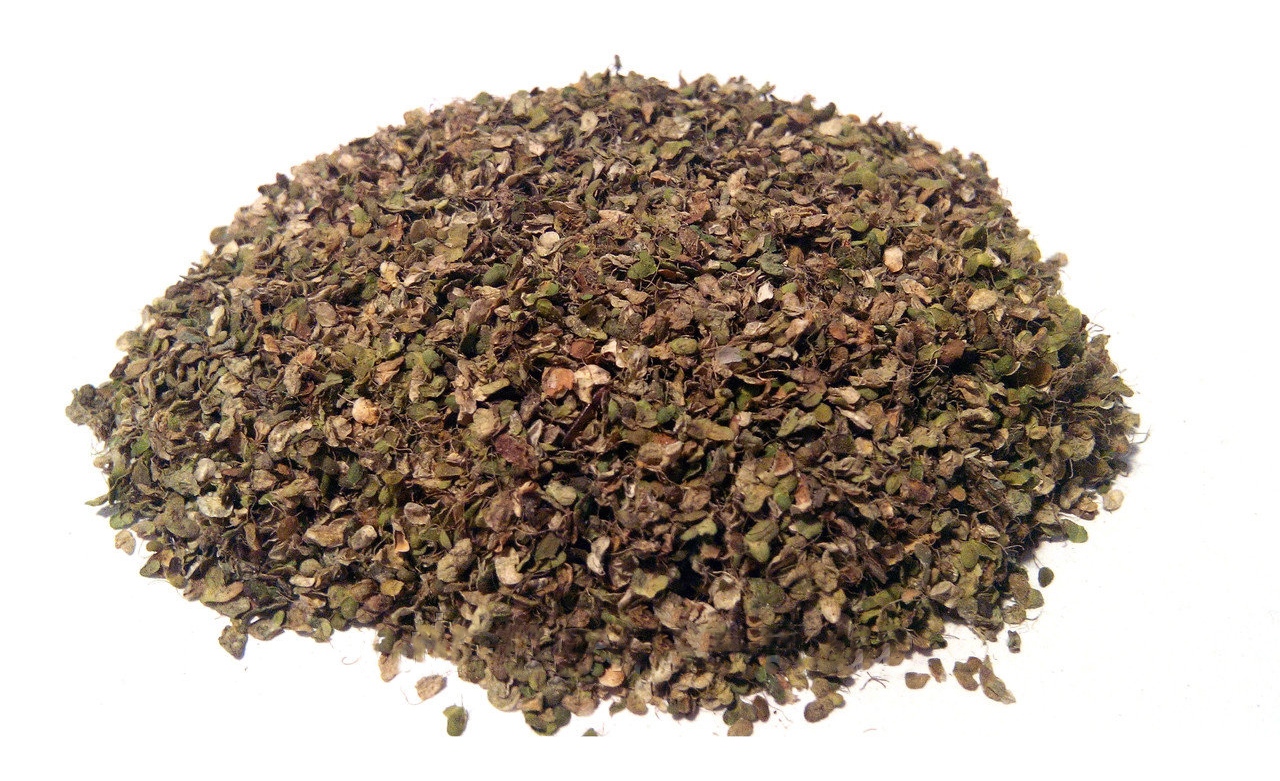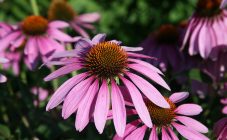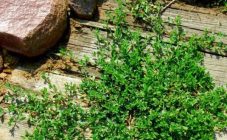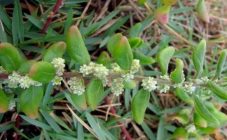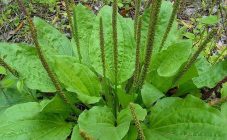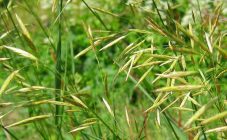Content:
Fresh water bodies are often covered with a green plant - this is duckweed grass. It is used not only for food for ducklings, but also for medicinal purposes.
Description of culture
This is the world's smallest flower culture. Grows in stagnant fresh water. She appears in swamps, lakes, ponds. Distributed in North and South America, Europe, South Asia, Africa, Australia. One part of the species lives in subtropical and tropical climates, the other in temperate ones. It tolerates frost well, it is not afraid of pests and diseases, it multiplies quickly. Belongs to the Aroid family. Mostly perennial, but there are also annual types.
By structure, it is divided into: fronds - a flattened stem attached to a leaf, which, expanding, create whole chains; leaves that resemble bright, green scales (they have air in them, with the help of which they stay on the surface); an underdeveloped root that serves as an anchor; occasionally inconspicuous flowers appear, which have no petals or sepals.
Duckweeds in the family differ in structure, appearance, duration of residence, method of use, breeding period.
Varieties and varieties
There are about 13 types of duckweed. These include:
- Grass Marsh duckweed, or small - the most common, elliptical-like, yellowish-green in color, size - up to 4.5 mm;
- Three-lobed - floats in the water column, floats up only for flowering, consists of three lobes, looks like a spoon in shape;
- Humpback - convex leaves, forming a tubercle, common in aquariums, up to 7 mm in size, growing very quickly;
- Common multiforum - has not one, but several roots on one frond, hibernates at the bottom of the reservoir in the form of a turion.
How does it multiply
Grass procreation is fast, seeds and vegetatively. Maternal individuals allocate daughter, which, in turn, also divide. If conditions were favorable, then culture could fill the entire planet in two weeks.
Culture properties
All types of duckweed grass include:
- Flavonoids;
- Proteins;
- Carotenoids;
- Fatty acid;
- Tannins;
- Vitamins - PP, groups B, C, E;
- Minerals - I, Br, P, Si, Cu, Fe, Zn;
- The predominant amount of amino acids.
Other properties of duckweed:
- To enrich the reservoir with oxygen;
- Accumulation and processing of phosphorus and other heavy metals discharged into water bodies;
- Used for wastewater treatment;
- Improves the quality of drinking water.
Duckweed grass application
Many animals eat it: newts, frogs, lizards, waterfowl. They carry grass for miles around.
Man uses duckweed in economic activities and in medicine. Because of its nutritional value, the crop was specially grown and added to feed for livestock, pigs and poultry.People began to use duckweed to clean water bodies, ponds, lakes, etc. Also, grass is used in order to see the presence of harmful substances in water bodies, as in the presence of chemicals it stops multiplying. For example, it reacts very strongly to chlorine, dies at high concentrations of substances. This is how the water quality can look by the plant's reaction.
In some countries, duckweed is used for food. It is also used to make seasonings for dishes. The herb is used for medications and in folk medicine. Aquarists use it to purify water and feed fish.
In folk medicine
With the help of herbs they treat:
- Rheumatism;
- Boils and acne;
- Glaukoma;
- Ulcer;
- Gout;
- Skin diseases.
It is also used to treat allergies, liver and stomach and intestinal diseases. Duckweed helps with inflammation and swelling of the face, arms, legs. It is used as a source of protein for dystrophy. It can also be used for the prevention of cancer, as a carminative, diaphoretic, diuretic, expectorant and other means.
Contraindications:
- Duckweed affects the nervous system, people who have disorders should be used with caution;
- Allergic reactions are possible;
- It is undesirable to use with vegetative-vascular dystonia.
Adverse reactions were not observed when using Ryaska.
About diseases and pests
Grass is an unpretentious and rapidly multiplying crop. It is not susceptible to attack by pests. Duckweed stands out for its high resistance to diseases.
Seed germination problems:
- Very low temperature - the weed spoils and dies.
- An excess of impurities in the water, the growth of duckweed is slowed down - a sign of a lack of nutrients in the reservoir.
When to collect grass
In the summer, the collection of duckweed begins. Sometimes raw materials are prepared in the fall. During this period, the grass prepares for wintering. It accumulates a large amount of nutrients. All the duckweed is driven to the edge of the reservoir and scooped out with a net.
How to dry and store
The caught duckweed is washed, cleaned of debris and laid out in a thin layer on a dry surface. The place must be protected from the sun. From the finished raw materials, make water or alcohol tinctures or grind it into powder.
The duckweed herb is a rather valuable and unique culture. Its potential is enormous, but has not yet been fully explored. Perhaps scientists will reveal many new and useful qualities of duckweed.
